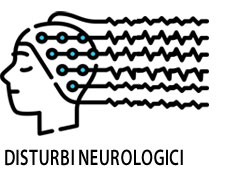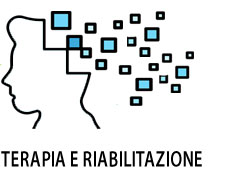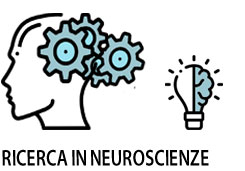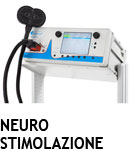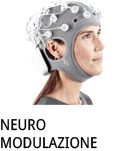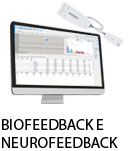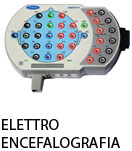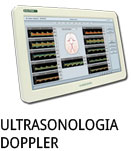- +39 011 5821948
- info@geasoluzioni.it
- Lun - Ven 8:00 - 17:00
Pubblicazioni
Can restricting blood flow improve sports and exercise performance?
- Abstract:
- The artificial induction of ischemia (from Greek, meaning stopping/keeping back blood) was first shown to help protect cardiac muscle from injury in later occurring episodes of ischemia by Charles Murry and colleagues in 1986 [1]. This technique came to be called ischemic preconditioning (IPC). In the last decade, this technique has received increased attention in the world of sports and exercise science as a so-called ergogenic aid—i.e., as a means of enhancing performance. However, in this context, it is not the heart that is deprived of blood. Rather, by placing blood restricting cuffs on the limb(s), it is the muscles that are subjected to a brief period of hypoxia. A meta-analysis from 2016 [2] found that IPC positively influences performance in aerobic and anaerobic types of exercise, such as swimming, cycling, and running. The underlying physiological effects of IPC are still unknown but are thought to include changes in tissue oxygenation and blood flow, mitochondrial function, endothelial function, and energy demands [2]. Noteworthy is that many effects seem to be systemic, rather than localized to the muscles deprived of blood. This is evidenced by the fact that there is a slightly larger improvement in performance when applying IPC to the limb(s) not primarily involved in the exercise. An example protocol in a study of IPC and exercise involves inflating a cuff to about 200 mmHg to restrict arterial inflow of blood. This is then often repeated multiple times, in blocks of 5 to 10 minutes, interspersed with rest periods to allow for reperfusion. Next, after a longer rest period, the subjects go through the exercise or sports intervention of interest. Multiple sessions are often used to acquire baseline and/or further intervention data. An excellent tool aiding is this type of investigation is the Portamon device. Using this, researchers can monitor the intended effect of restricting arterial inflow by tracking oxygenation changes in the muscle of interest [3,4]. Furthermore, as the Portamon is portable it can also be applied to monitor how the application of IPC affects muscle oxygenation during exercise interventions. The Portamon device has been used for a range of different types of studies, involving activities such as: cycling [5], strength testing [3,4], running [6], and speed skating [7]. In parallel with the increased interest for IPC, research into so-called "blood flow restricted exercise" (BFR) has become more common. The two techniques are highly similar, however, in general, BFR is more often performed during exercise whilst IPC is generally performed prior to exercise. BFR has its origin in 1970s Japan, where it was pioneered by Yoshaki Sato [8] to increase the hypertrophic and strength increasing effects of resistance exercise. However, whereas the effect of IPC is systemic, the strength and hypertrophic effects of BFR mainly seem to be localized to the affected muscles. Muscle fiber swelling and indirect effects of metabolite production are thought to be responsible for the effect [9]. In 2015, a meta-analysis [10] reported that adding BFR to resistance anaerobic, exercise improved gains in strength and hypertrophy. While this is great news for athletes doing strength- and power-based sports, there is another—very important—advantage to BFR. It also allows strength and muscle building using much lower loads than traditionally used in resistance exercise. This opens the door for BFR as a great tool to use with injured or recovering athletes—and more importantly—in populations such as the elderly, and those suffering from chronic illness.
- Patologie/Applicazioni:
- Anno:
- 2018
- Tipo di pubblicazione:
- Articolo
- Parola chiave:
- NIRS; Sport; Ciclismo; Potenziamento muscolare
- Testata scientifica:
- Artinis Blog
- Nota:
- Interessante articolo riguardo l'induzione artificiale di ischemia come come mezzo per migliorare le prestazioni degli sportivi. Un protocollo di esempio in uno studio sulla CPI (compressione pneumatica intermittente) ed esercizio comporta il gonfiaggio di un bracciale a circa 200 mm Hg per limitare l'afflusso arterioso di sangue. Questo viene poi ripetuto più volte, in blocchi da 5 a 10 minuti, intervallati da periodi di riposo per consentire riperfusione. Successivamente, dopo un lungo periodo di riposo, i soggetti passano attraverso l'esercizio o l'intervento sportivo di interesse. Più sessioni vengono spesso utilizzate per acquisire dati di riferimento e / o ulteriori interventi. Un eccellente strumento di aiuto è questo tipo di indagine è il dispositivo Portamon distribuito in Italia per Artinis Medical Systems dalla GEA soluzioni. Nell'articolo si parla anche del cosiddetto "esercizio limitato al flusso sanguigno" (BFR). Mentre l'effetto della CPI è sistemico, la forza e gli effetti ipertrofici del BFR sembrano principalmente localizzati ai muscoli interessati, utile dunque per gli sport di forza e di potenza. Il BFR permette di scolpire il muscolo usando carichi molto più bassi rispetto a quelli usati tradizionalmente nell'esercizio di resistenza.
La nostra storia
GEA soluzioni si affaccia nel 2013 al mercato della strumentazione medicale di alto livello tecnologico ma la sua storia parte da più lontano, clicca qui per approfondire.
GEA SOLUZIONI SRL
via Spalato 72/A, Torino
Tel.: 011 5821948 / 011 4463853
Fax: 011 0433281
Email: info @ geasoluzioni.it
P. IVA IT11696920013
REA TO1233648

